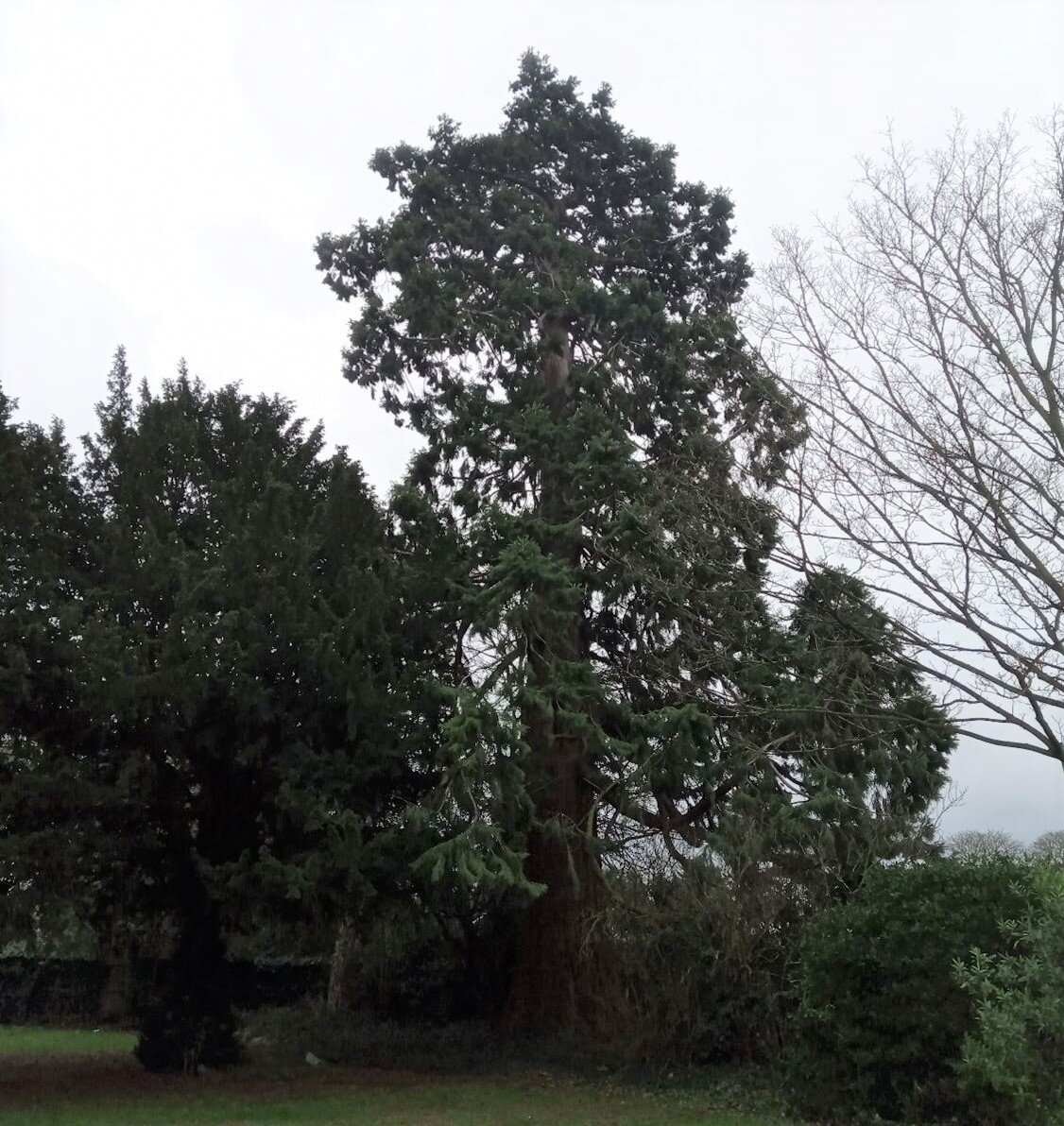Giant Sequoia, Sequoiadendron giganteum
/It's the time of year for celebrating conifers. It's not just gardeners who take note of how their varied solid shapes establish and preserve structure but all those who have used their prickly mass to act as backdrop to festive sparkle and who now must recycle, burn or bundle up for disposal. We walk through the cold landscape and find reassurance that beside the attenuated twigs of deciduous trees grow green and sturdy bundles of yew, and pines and cedar stretch up powerfully when the world seems bleak.
A Giant Sequoia, a youngster planted by Rivers Nursery in Sawbridgeworth at the end of the nineteenth century, showing its strength in the Council Gardens.
An evergreen tree far too immense to bring indoors, which begins to tower early and which partakes of such a vast continuing existence as well as girth that it has become an object of awe is the Sequoiadendron giganteum. A native of the north-western coast of America not itself ‘discovered’ by white East coast explorers until the eighteenth and nineteenth centuries, the tree was not introduced into Britain until 1853, long after the first wave of American tree introductions in the late seventeenth century. By the end of the nineteenth century Sequoia were offered for sale widely by established nurseries here and their bulk came to punctuate most grand parks and large gardens. There they stand in winter slowly rising and rising, just getting going on their possible thousand years life spans among the lesser trees that distract in other seasons.
What common name would suit a giant, one that measures up to 100 metres tall in its native habitat on the western slopes of the Sierra Nevada Mountains in California, with a girth so large it can only be illustrated by cheap tricks like carving a road through one? What else but a general’s name: so here in Britain what else but the Wellington, hero of Waterloo. In the USA, the great individual trees are named one by one for generals like Robert E. Lee, defeated hero of the South states. These names, subject to transatlantic disagreement, which are faded political statements of their time, seem insignificant as the trees themselves settle as independent huge beings.
US stamp issued for the 1978 annual convention of the American Forestry Association
A recent novel, Richard Powers’ The Overstory, nominated for the Booker Prize in 2018, is a story of the vulnerability of Sequoia, in this case the Dawn Redwoods of Oregon, (one state north of California), ancient and known as the tallest trees in the world, and now listed as an endangered species. The book vividly tells of rapacious, all destroying chain saw attacks made on Sequoia groves by those aiming to profit by felling them, and of the defensive war waged by men and women who feel akin to the trees, who are willing to camp out for months in the crowns of trees. It’s a gripping read and makes a powerful case for the preservation of the natural environment, especially since once such ancient specimens are gone, what chance in our deteriorating climate is there of such specimens maturing again?
From that novel I learned of the perhaps counterintuitive, but scientifically proven, below ground connection between tree and tree in the groves in which they stand; harm one and all feel the pain as, if I understand it, all are parts of the one being. Perhaps the seeds from cones of the first enable new trees to grow nearby. A local and historically puzzling illustration, in Essex beside the Stort in old Harlow down a track from the Beefeater pub on the A1184, can be found in an amazing hidden grove of Wellingtonias. These trees grow so enormous and so dense it’s hard to see their tops as you stand wondering among them. It may be that the first was planted a century or more ago beside a mill that has now disappeared. It’s a glorious mystery.
Picture credits: Stamp from https://www.conifers.org/cu/Sequoiadendron.php; Photo, author’s own



